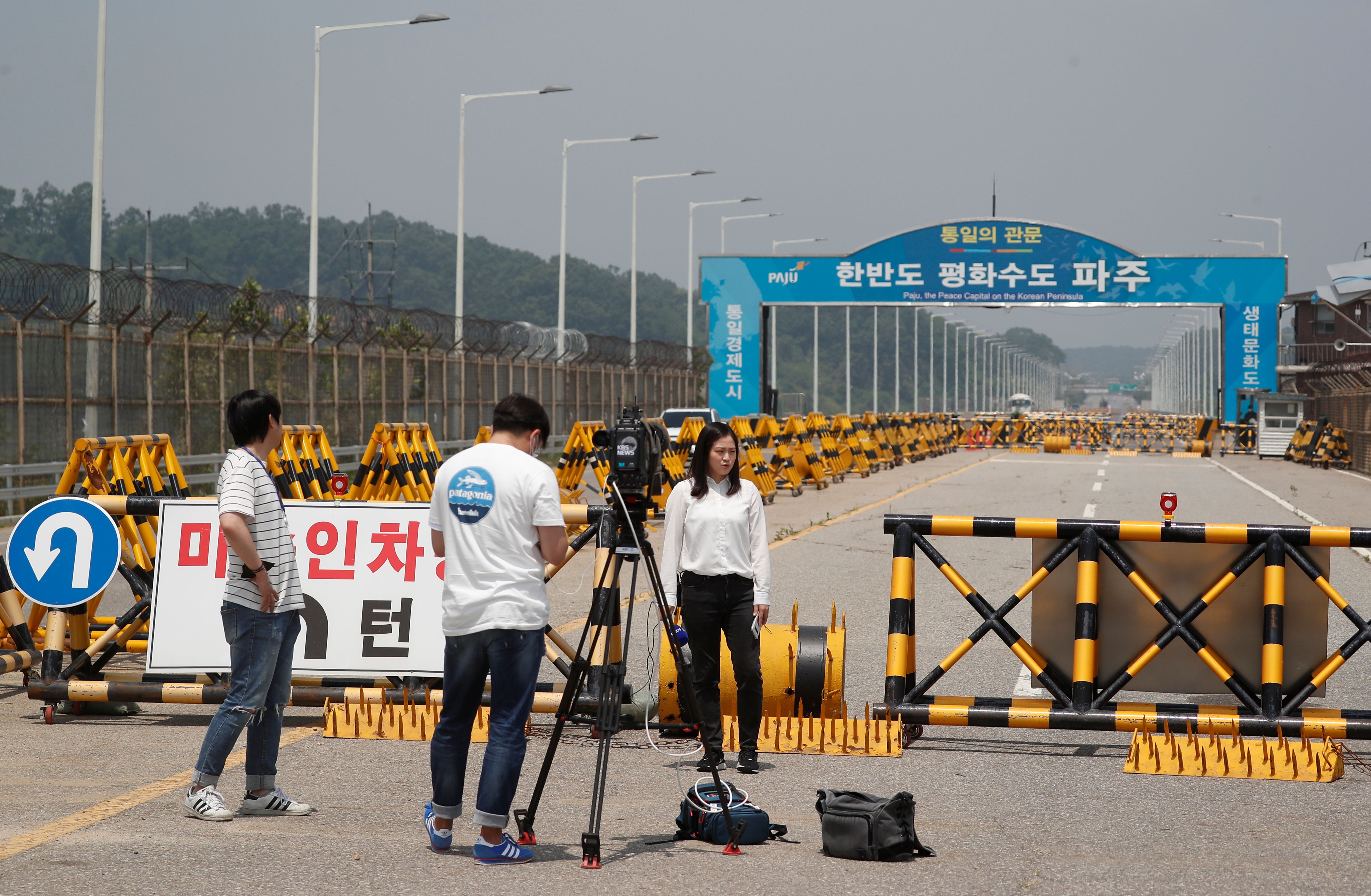North-South Korea Tensions Increase

What happened?
On 10 June, North Korea cut off all government and military hotline communications channels, which enabled regular telephone contact between the Koreas. In practice, this means that the North does not receive phone calls from the South. This is the eighth time the North has done this since establishing communication lines in 1971. On 16 June, North Korea blew up the inter-Korean liaison office in Kaesong, established in September 2018. It facilitated direct contact between the representatives of the two Koreas and was an element of improving mutual relations, which was declared during the summit between North Korean Chairman Kim Jong-un and South Korean President Moon Jae-in in Panmunjom in April 2018. The ostentatious act of literally blowing up the office was not a surprise because North Korea had warned it would do it several days in advance. Moreover, the office has not been used for months.
What is the context of these actions?
North Korea had threatened to break inter-Korean contact since the end of May over allegations that the South Korean authorities did not stop groups of North Korean defectors and activists from sending balloons with anti-regime propaganda leaflets to North Korea. North Korea saw this as a breach of the Panmunjom declaration. The confusion about the leaflets, however, was only a pretext, as relations between the Koreas have deteriorated since the fiasco of the North Korean and U.S. leaders’ summit in Hanoi in February 2019. Since then, the North Korean authorities, seeing that Moon has no influence on U.S. President Donald Trump’s actions, have gradually limited contact with South Korea, rejected proposals for humanitarian aid and conducted military activities, such as short-range rocket tests and exercises with conventional armaments. In May, North and South Korean troops exchanged fire along the border and the North intensified its hostile rhetoric towards the South.
What is North Korea trying to achieve in foreign policy?
By increasing the tensions, North Korea demonstrates its dissatisfaction with the state of inter-Korean relations. The deadlock in the U.S.-North Korea dialogue and the consequent maintenance of sanctions prevents economic cooperation between the Koreas, which is particularly important for the North. By provoking a crisis, North Korea is trying to coerce Moon Jae-in to make concessions, including seeking ways to circumvent UN sanctions and to stop joint military exercises with the U.S. In this way, North Korea is trying to harm the U.S.-South Korea alliance and indirectly affect the U.S. Departing from the inter-Korean agreements of 2018, North Korea is preparing the ground for the resumption of dialogue with South Korea on its own terms. In the long run, the North may want to go back to what had already been achieved in 2018, provided that it receives major concessions from the South.
What internal conditions prompted North Korea to escalate tensions?
The recently launched mass-mobilisation campaigns against South Korea may serve to divert the attention of North Koreans from their economic problems, which have increased because of the COVID-19 pandemic. Although officially there are no SARS‑CoV‑2 infections in North Korea, reports by NGOs indicate a deterioration in the internal situation because of the closure of borders since January and the related reduction in supplies from China. The creation of a crisis in relations with the South may also be needed for army-connected elites as an excuse to further develop military potential. Recent North Korean statements also indicate the growing importance of Kim Yo-jong—Kim Jong-un’s younger sister—in the North Korean leadership. The announcements about the escalation of tensions in relations with the South were marked with her name, which may be intended to strengthen her position within the elite and with the North Korean
What’s next?
In the short term, North Korea will undermine further elements of inter-Korean cooperation. It has already declared the relocation of troops to areas demilitarised under the agreement on confidence-building measures at the North-South border in September 2018. North Korean troops will occupy the symbols of cooperation between the Koreas: the industrial complex in Kaesong and the Mount Kumgang tourism resort. North Korea also announced the resumption of regular military exercises near the sea border. Although the North strikes at Moon’s conciliation policy, he is unlikely to violate the UN sanctions. In the long run, North Korea will likely increase the tensions in more serious ways, for example, by conducting ballistic missile tests from a submarine (SLBM). The aim is to influence the course of U.S. foreign policy towards North Korea after the presidential elections. Suitable dates for such actions may be early July (Independence Day in the U.S.), August (U.S.-South Korea drills), or October (75th anniversary of the founding of the Workers’ Party of Korea).


